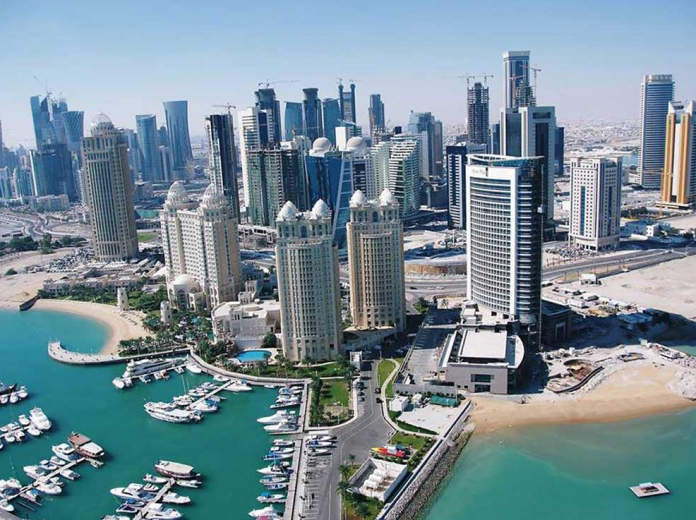Doha: According to the latest data issued by the Planning and Statistics Authority, March saw the issuance of 747 building permits in various municipalities across the country, with an 8 percent increase, compared to February’s 689 building permits.
A press release issued yesterday shows that when compared to the number of building permits issued in February 2024, those issued in March 2024 demonstrate a general increase of 8 percent.
This increase was noted in most of the municipalities: Al Sheehaniya (42 percent), Al Doha (26 percent), Al Wakrah (20 percent), Al Khor (20 percent) and Al Rayyan (9 percent). On the other hand, there was a clear decrease in the municipalities of Al Shammal (54 percent), Umm Slal (26 percent) and Al Da’ayen (10 percent).
According to their geographical distribution, the municipality of Al Rayyan comes at the top where the number of building permits issued was 210 permits, i.e. 28 percent of the total issued permits, while the municipality of Al Doha came in second place with 179 permits, 24 percent, followed by municipality of Al Wakrah with 120 permits, 16 percent, and then Al Da’ayen municipality with 111 permits, 15 percent. The rest of the municipalities were as follows: Al Khor 55 permits, 7 percent, Umm Slal 39 permits, 5 percent, Al Sheehaniya 27 permits, 4 percent and Al Shammal 6 permits, 1 percent.
Also Read: Italian fashion designer Roberto Cavalli dies at the age of 83
In terms of the type of permits issued, data indicates that the new building permits (residential and non-residential) constitute 42 percent (310 permits) of the total building permits issued during March 2024, while the percentage of additions permits constituted 53 percent (399 permits), and finally fencing permits at 5 percent (38 permits).
Villas topped the list of new residential building permits, accounting for 88 percent (226 permits) of all new residential building permits, followed by apartment building permits at 11 percent (29 permits), and other residential building permits at 1 percent (2 permits).
On the other hand, industrial buildings e.g., workshops/factories were found to be at the forefront of non-residential buildings permits with 34 percent (18 permits), followed by service/infrastructure buildings with 24 percent (13 permits), then commercial buildings with 17 percent (9 permits).
Comparing the number of certificates issued in March 2024 with those issued in the previous month there is a general increase of 3 percent. This increase was noted in the municipalities of Al Shammal (150 percent), Umm Slal (75 percent), Al Sheehaniya (67 percent), Al Rayyan (20 percent), Al Khor (13 percent) and Al Doha (10 percent). On the other hand, there was a clear decrease in the municipality of: Al Da’ayen (28 percent) and Al Wakrah (8 percent).
According to their geographical distribution, the municipality of Al Wakrah come at the top of the municipalities where the number of building completion certificates issued was 93 certificates, 27 percent of the total issued certificates, while Al Rayyan municipality came in second place with 83 certificates (24 percent), followed by municipality of Al Doha with 69 certificates (20 percent), then municipality of Al Da’ayen with 46 certificates, (14 percent).
The rest of the municipalities were as follows: Umm Slal 21 certificates, 6 percent, Al Khor 17 certificates, 5 percent, Al Shammal and Al Sheehaniya 5 certificates, 1 percent, each municipality.
In terms of type of certificates issued, data indicates that the new building completion certificates (residential and non-residential) constitutes 77 percent (261 certificates) of the total building certificates issued during the month of March 2024, while the percentage of additions certificates constituted 23 percent (78 certificates).
By analyzing new residential buildings completion certificates data, it is found that villas top the list, accounting for 91 percent (170 certificates) of all new residential buildings completion certificates, followed by apartments buildings by 7 percent (13 certificates), then other residential buildings certificates by 2 percent (4 certificates).
On the other hand, commercial and administration buildings were found to be in the forefront of non-residential buildings completion certificates with 61 percent (45 certificates), followed by industrial buildings e.g. workshops and factories with 20 percent (15 certificates), then service / infrastructure buildings with 9 percent (7 certificates).
Building permits and building completion certificates data is of particular importance as it is considered an indicator for the performance of the construction sector which in turn occupies a significant position in the national economy.




